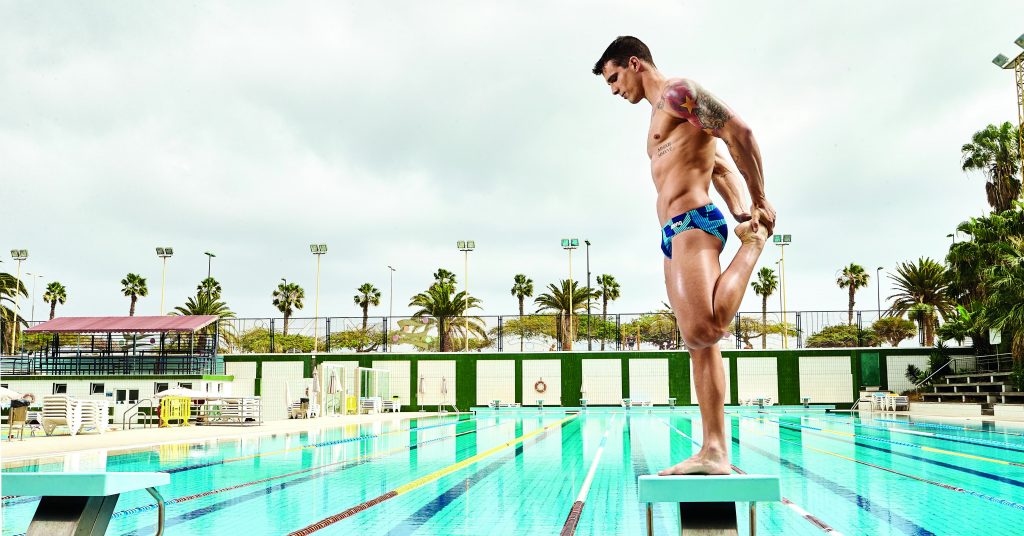We have already discussed the importance of strength training out of the water for a swimmer. We would now like to take both a theoretical and practical look at how to perform this kind of strength training, which is part of a swimmer’s early-season out-of-pool training plan: the MAXIMUM STRENGTH phase.
So what is maximum strength work?
It is the maximum amount of power your body can generate through voluntary muscle contraction. This kind of training means increasing your ability to generate power. It’s trained during the early stage of a training plan (generally referred to as the GENERAL phase) that lasts from four-eight weeks. The idea is to be as strong as possible during later phases so that this strength can be transformed into specific power for swimming. This stage does not include exercises mimicking your swim stroke, neither does it involve transformation exercises.
On a theoretical level, how do you train for maximum strength?
As usual, there are various schools of thought on these matters. But one thing is certain: you need to use heavy weights close to your maximum (worked out before training beings by taking special tests), otherwise your muscles are not stimulated enough. Nevertheless, you will not be able to perform enough reps if the weight is too close to your maximum.
In the case of less experienced athletes, an excellent workout would be three-four sets of six reps using weights that are 80% of your maximum for the bigger muscle groups and two-three series of eight reps at 60/70% of your maximum for the others.
As regards the biggest muscle groups, more experienced athletes might find the pyramid method useful. According to this method, each set involves a decreasing number of reps with a corresponding increase in weight.
Based on what we have said above, here are two examples of training plans involving two sessions a week. Both will begin in the same way:
- Warmup: 5-10 minutes of aerobic work
- Flexibility/agility and injury prevention: exercises working on the flexibility of your shoulders and legs, such as shoulder rotations or lunges and/or exercises with rubber bands.
- Abdominals: 10 minutes of static or dynamic exercises
The warm-down (10 minutes static stretching) is also the same.
– Chest
- Flat bench presses with barbell 4×6
- Dumbbell flys 3×6
– Back
- Lat Machine 4×6
- Dumbbell rows 4×6
– Arms [you have already used your biceps and triceps to perform the previous exercises, so focus on the rest of the exercises if you do not have much time available]
- Biceps: barbell curls 2×8
- Triceps with cables 2×8
– Shoulders
- Lateral raises 2×8
– Legs
- Squats 4×6
- Leg Extensions 3×8
PLAN B – PYRAMID SESSION
– Chest
- Flat bench presses with barbell 1×10(60%) – 1×8 (70%) – 1×6 (80%) – 1×4 (85-90%)
- Dumbbell flys 3×6
– Back
- Lat Machine 1×10(60%) – 1×8 (70%) – 1×6 (80%) – 1×4 (85-90%)
- Dumbbell rows 4×6
– Arms [you have already used your biceps and triceps to perform the previous exercises, so focus on the rest of the exercises if you do not have much time available]
- Biceps: barbell curls 2×8
- Triceps extension with cables 2×8
– Shoulders
- Lateral raises 2×8
– Legs
- Squats 1×10(60%) – 1×8 (70%) – 1×6 (80%) – 1×4 (85-90%)
- Leg Extensions 3×6
For both training plans, you should take between one and one-and-a-half minute’s rest between sets.
As your muscles adapt, you should be able to slowly increase the amount of weight every two weeks.
Take these suggestions as guidelines and create your own custom-designed training plan!
